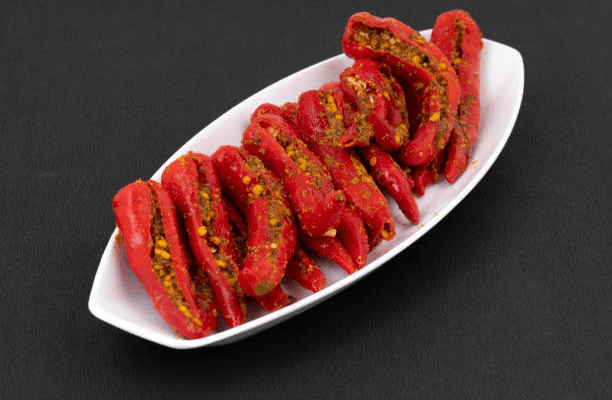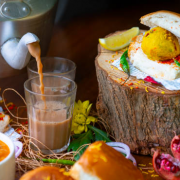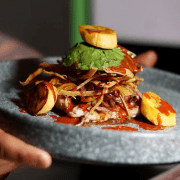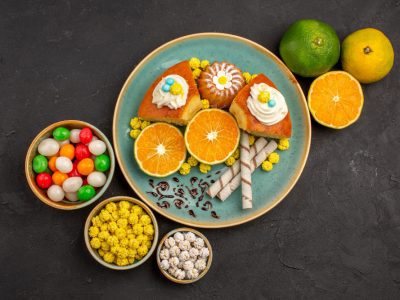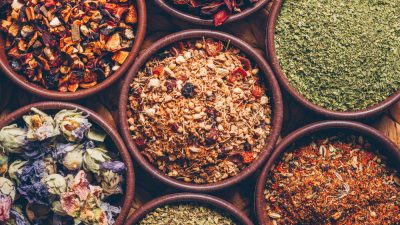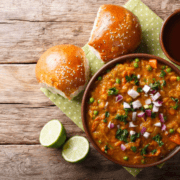Indian pickles, or achaar, are more than just additives; they portray the culinary heritage of India. Indian pickle making has a history that dates back centuries and has been passed down from generation to generation, with each region adding its own unique flavor. But what makes them so tasty? Let us now explore and find out some secrets about how traditional Indian pickles are made.

How did Indian pickle recipes evolve?
Indian pickle recipes have evolved over time under various factors like regional ingredients, climate, and cultural practices. Pickles were traditionally prepared with seasonal fruits and vegetables in order to preserve their taste throughout the year. The procedure involved picking the items, drying them under the sun, and then putting them into a blend of spices and oils.
The main distinguishing feature of Indian pickles from other types of pickles is that they use a wide range of spices. Each region in India has its own spice mix, which allows it to have a distinct flavour for its pickle recipes. For instance, Gujarat’s pickles have a sweetened tang, while those in Andhra Pradesh pack lots of heat.
This evolution was also influenced by the availability of ingredients for making these pickles. With time, people started experimenting with other fruits and vegetables as well as meats, leading to the variety available today that caters to all tastes and preferences.
What are the secrets to traditional pickle making?
Traditional pickle making in India is an art that requires patience, precision, and expertise in flavors. What are some secrets behind the uniqueness of Indian pickles?
Quality of Ingredients: A great pickle starts with superior-quality ingredients. This includes fresh mangos, ripe lemons, or fragrant spices, which make up the essential parts of the dish. These days, many traditional makers choose to go local when it comes to buying these ingredients, so that not only do they offer taste but authenticity too.
Sun drying: Sun drying plays a critical role in preserving traditional Indian picks because it helps remove moisture from fruits or vegetables, which, in turn, enhances their texture and prevents spoilage. This process of sun drying also helps to intensify the flavours that give pickles their distinguishing tanginess and crunchiness.
Oil and Spices: Oil and spices are the other elemental factors in traditional pickle making. It is mustard oil that is commonly used for North Indian pickles, while sesame oil is used in South India. The listed spices are grounded and roasted to go hand in hand with the main ingredient, thus creating a well-balanced taste.
Fermentation: The introduction of fermentation into the pickling process adds layers of flavor. During fermentation, natural bacteria break down sugars found within the ingredients, resulting in intricate flavours as well as a longer shelf life for pickles. Traditional makers prefer having their products ferment for several weeks, if not months, to allow them to acquire just the right mixture of sourness and heat.

What are some of the local pickles in India worth trying?
This aspect is evident in the pickles made across the country, with each region coming up with its own unique taste. For a foodie who would like to know more about Indian pickles, here are some top picks from various regions:
Mango Pickle (Aam Ka Achaar): Usually found in most Indian homes, mango pickle is prepared using raw mangoes, spices, and oil. The one prepared in North India has an acidic tang, while the South Indian version uses tamarind, which imparts a sour taste.
Lemon Pickle (Nimbu Ka Achaar): This type of pickle is loved all over India for its sharp-tasting flavor. In Gujarat, it is made sweet by adding jaggery, whereas Tamil Nadu’s contains red chillies and fenugreek seeds.
Gongura Pickle: Gongura pickle comes from Andhra Pradesh and is prepared from the leaves of the roselle plant. Its taste is very pungent; hence, it is commonly eaten with rice or flat breads.
Red Chilli Pickle: People who prefer their pickles hot love this kind that comes from Rajasthan. It consists of fresh red chillies along with other ingredients, making it extra spicy.
Garlic Pickle: Garlic pickle is popular among people living in western parts of India, where whole cloves are put into oil and spiced with mustard seeds, fennel, and fenugreek.
How Can You Experience Indian Cuisine at Home?
For anyone who loves to experiment with different dishes at home, making Indian pickles can be fun. Choose an uncomplicated recipe for any Indian pickle you like best, depending on your preference. There is a procedure for everyone, regardless of whether one fancies lemon or red chilli recipes known for their sourness and spiciness, respectively.
However, if you wish to explore Indian pickles without the burden of preparing them yourself, Bangalore has many opportunities for this. Local markets, as well as niche stores, are rich in an assortment of pickles that are made in a traditional way. For those who want to find out about up-and-coming businesses, the HOGR app is the only place to go.

Why do you need the HOGR app?
Anyone with a taste for food cannot afford to be left behind if they are in Bangalore. With the help of the HOGR app, you can see where different regional pickles are available and what other authentic delicacies can be found near you. The aim is to make sure that no customer ever misses out on their favourites like mango pickles or Gongura pickles when they become available in the city.
Additionally, there is information about imminent food festivals, trainings offered to anyone interested in making dill pickles, and promotions going on at your best shops. Quit hesitating; get hold of the HOGR app now and experience the Indian pickle world throughout your days.
This blog presents Indian cuisine and advises visitors to Bangalore on how to try it. By downloading the HOGR app, readers can stay connected with the latest trends in traditional and regional pickles all over town.
Also Read- The Art of Indian Spice Blending: Revealing the Secrets of Flavor
